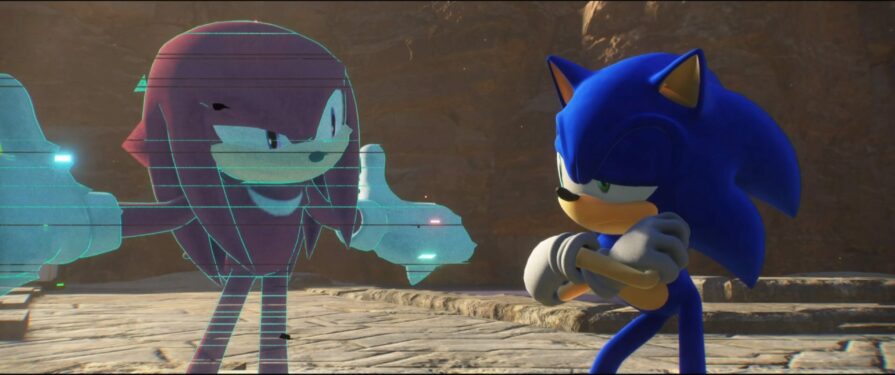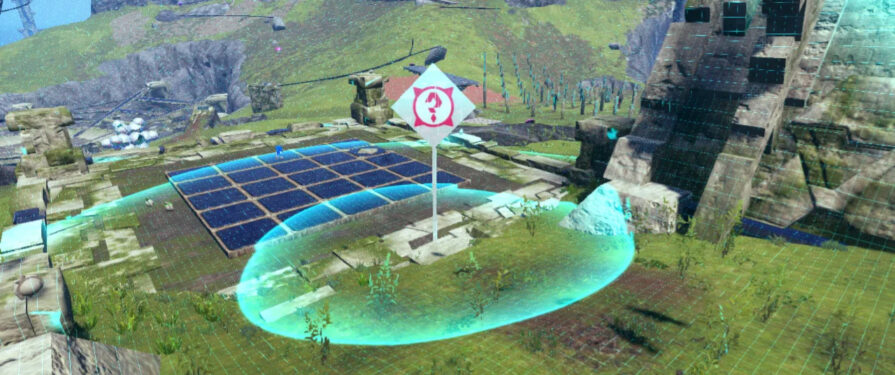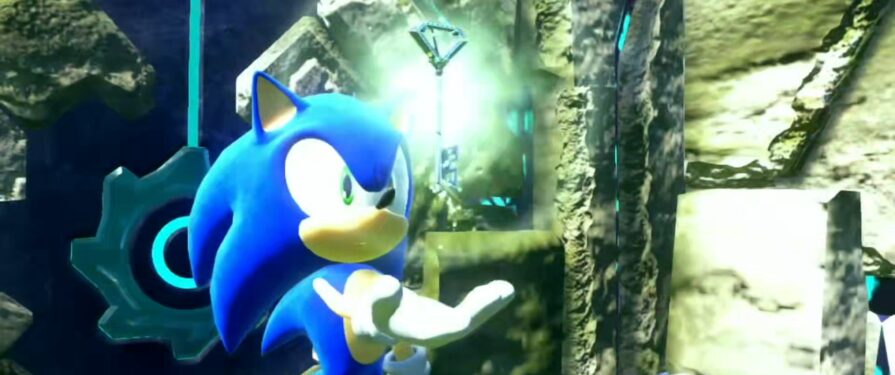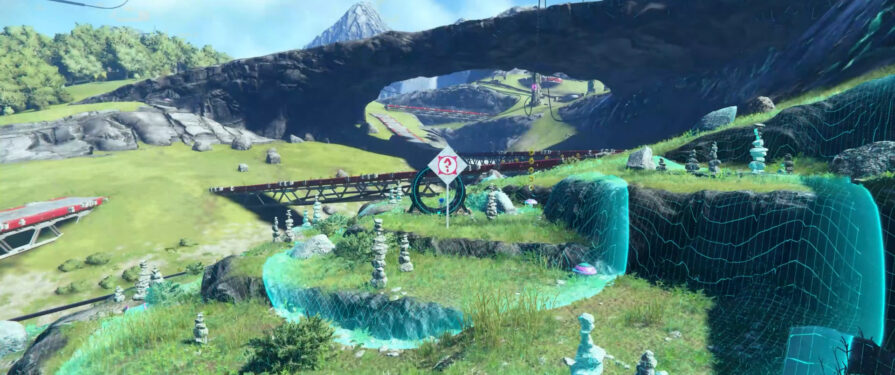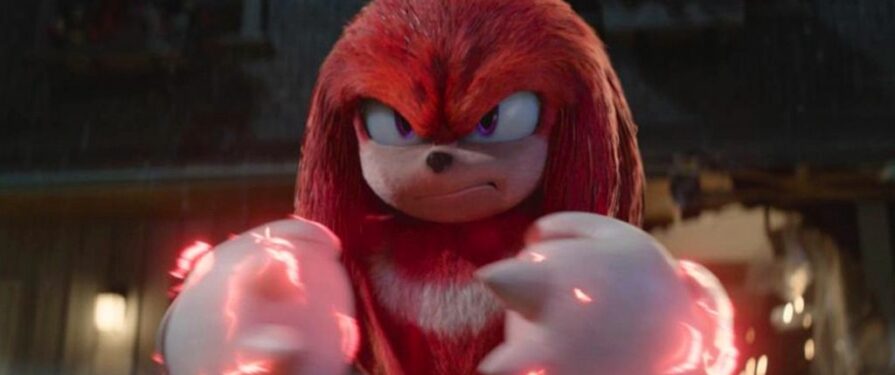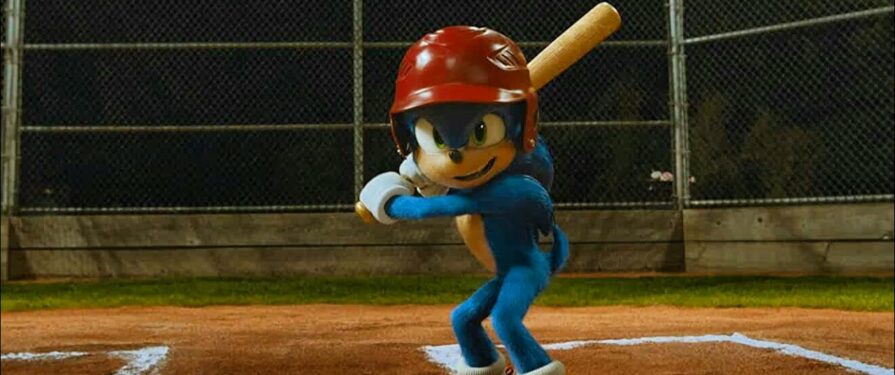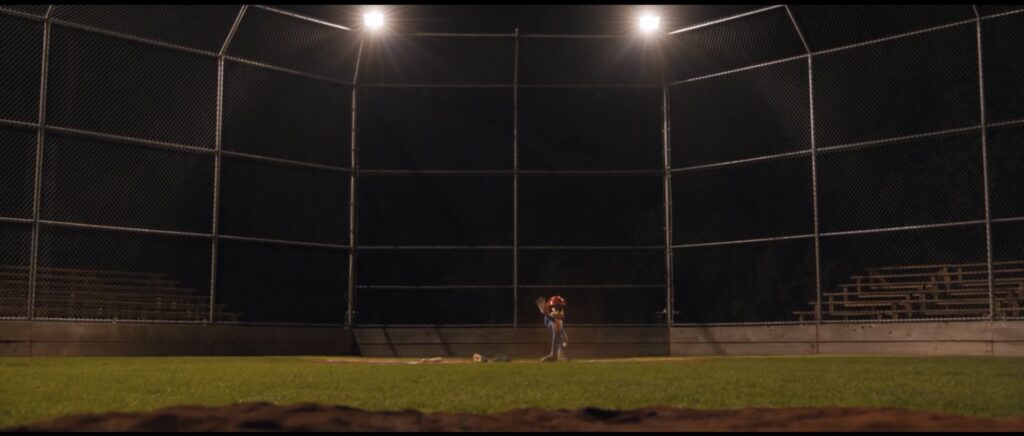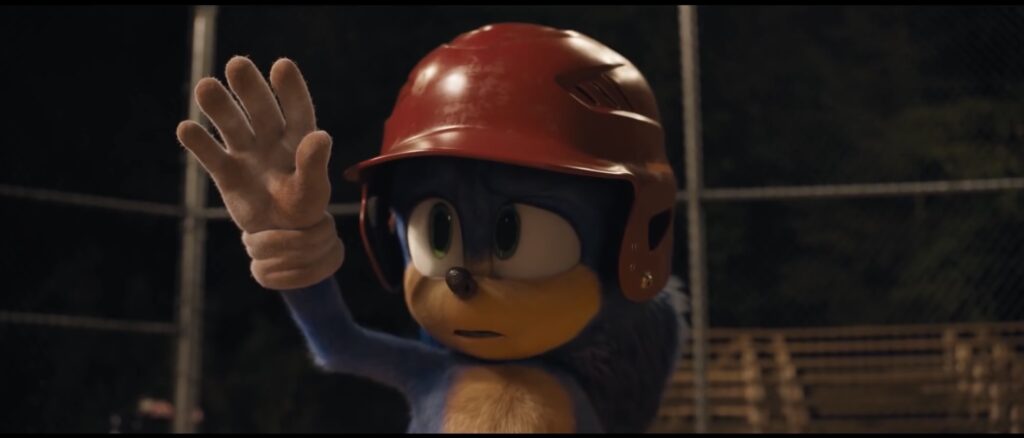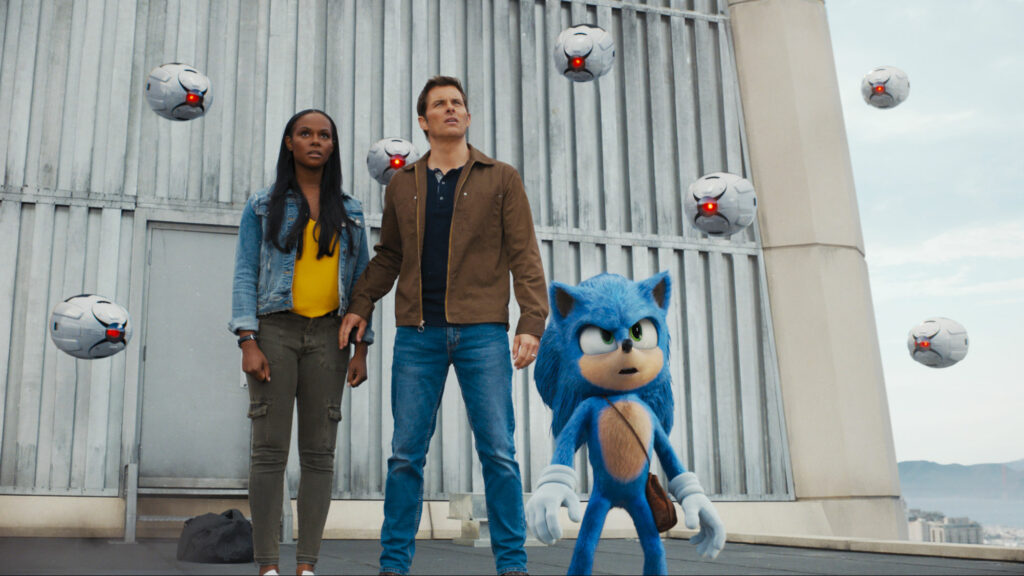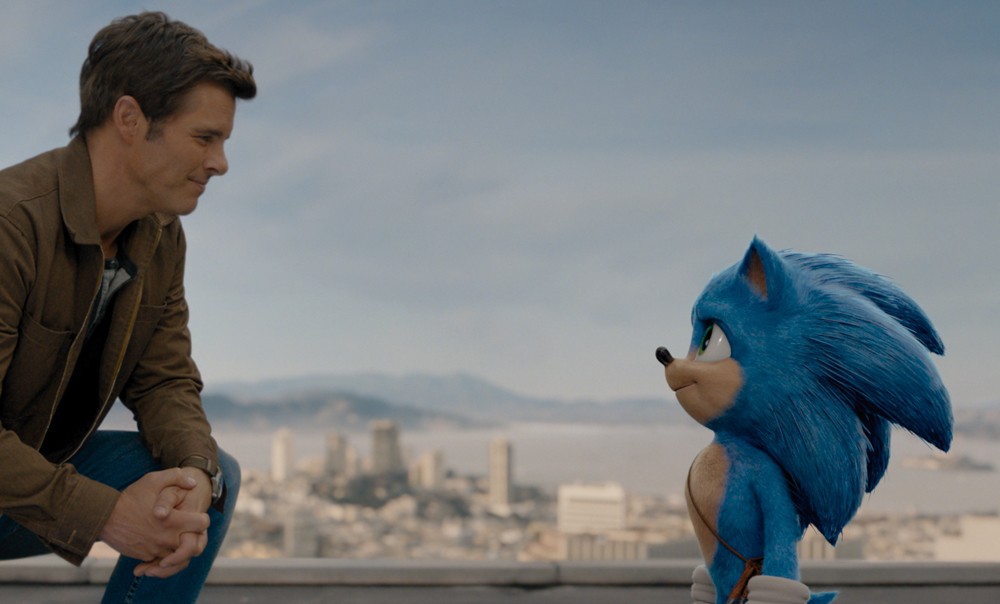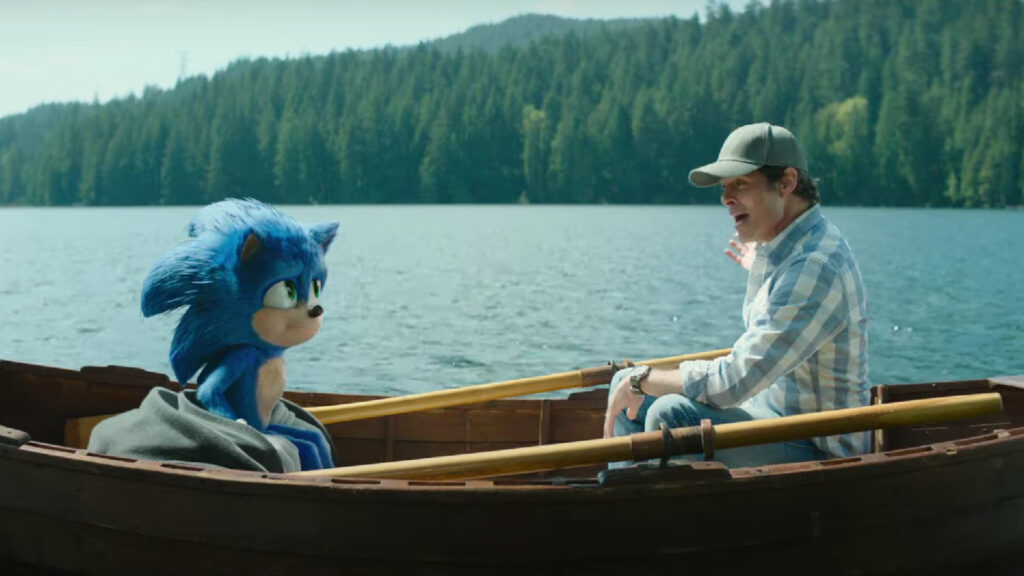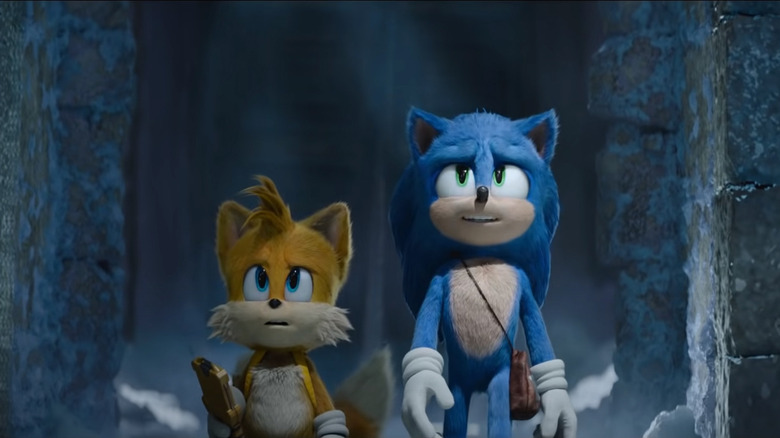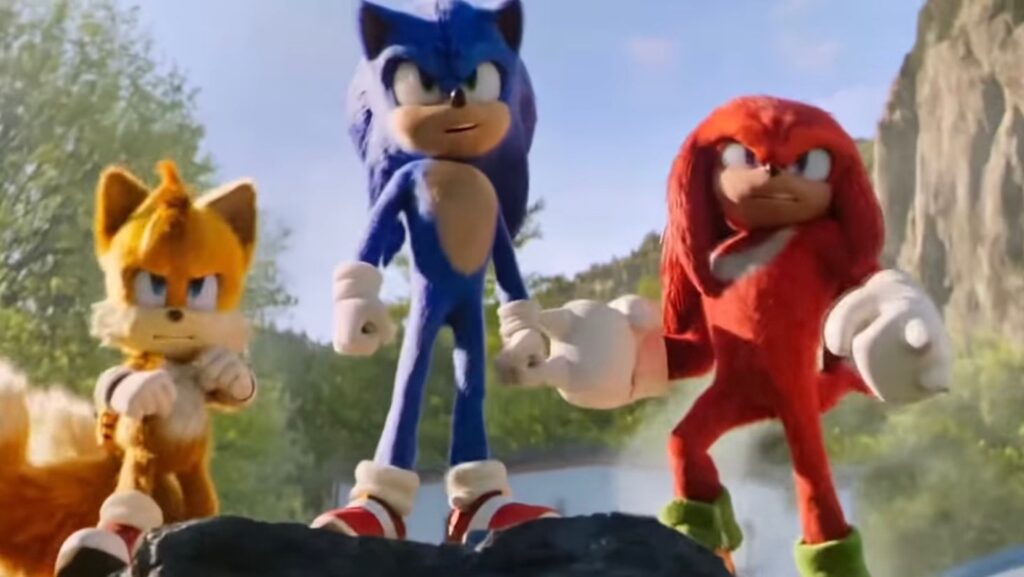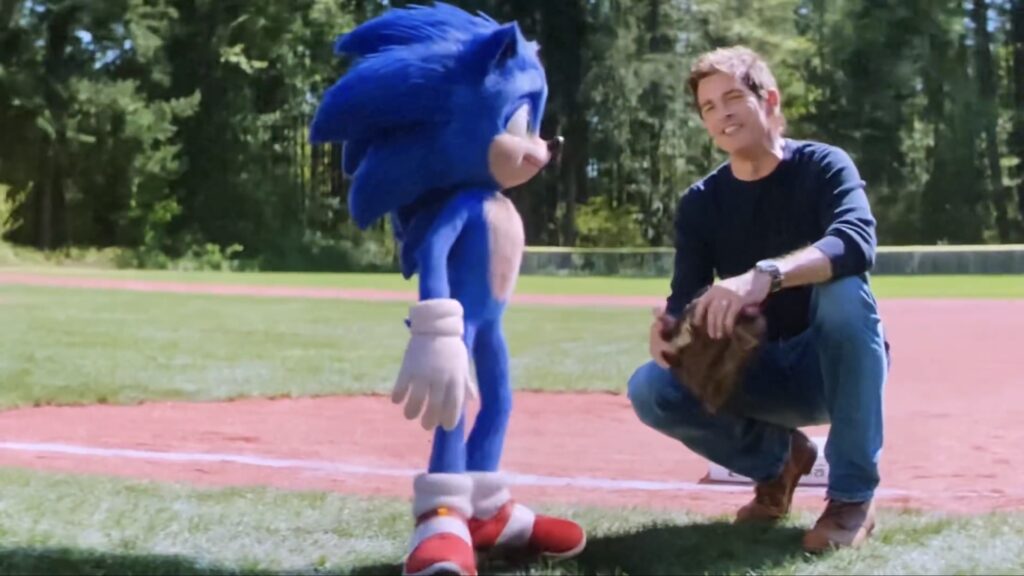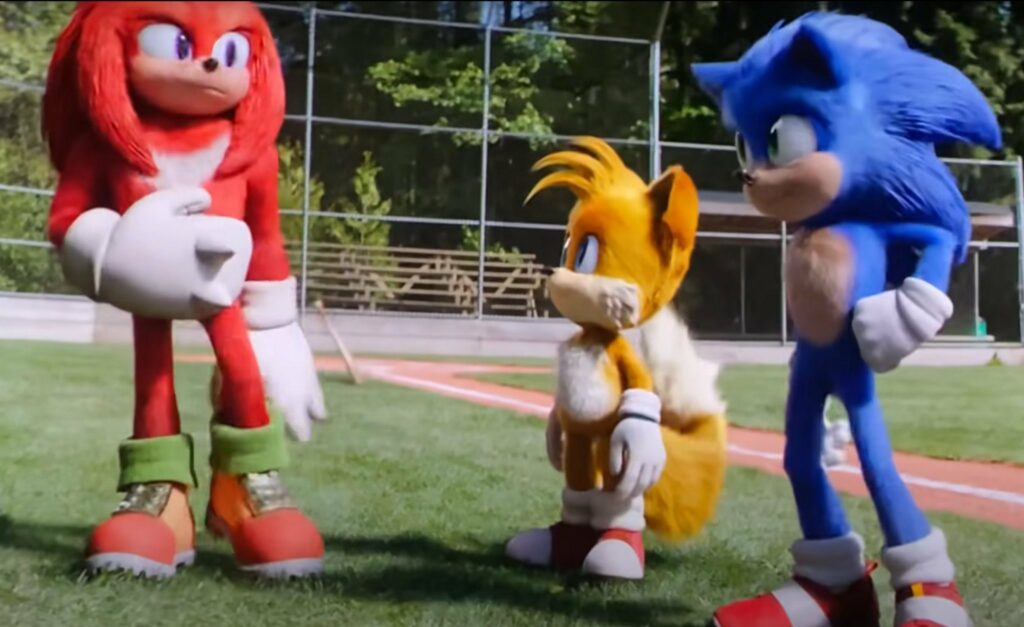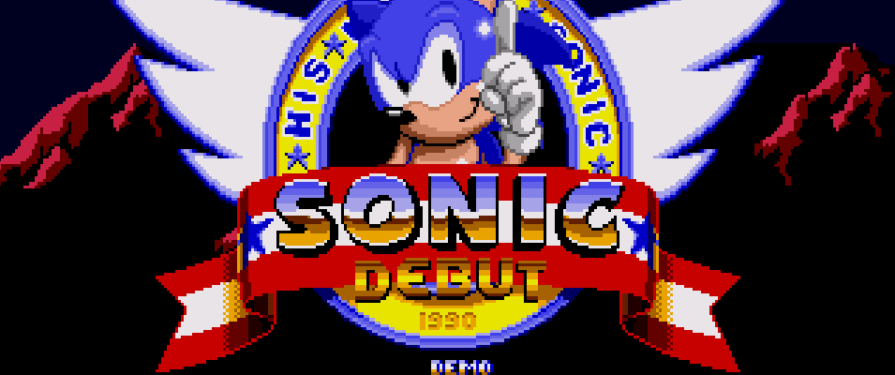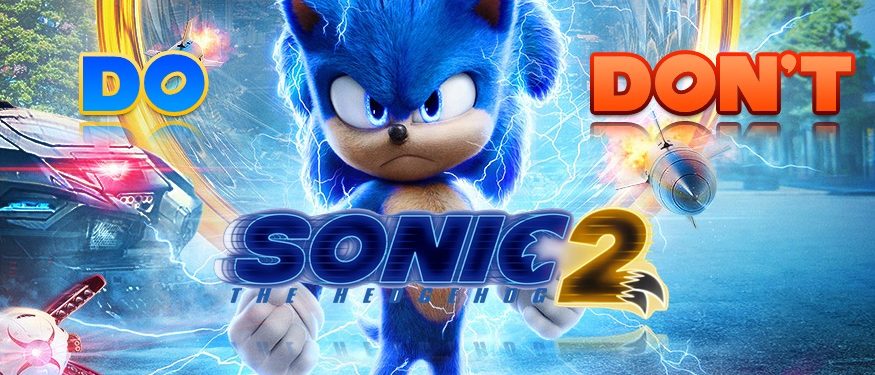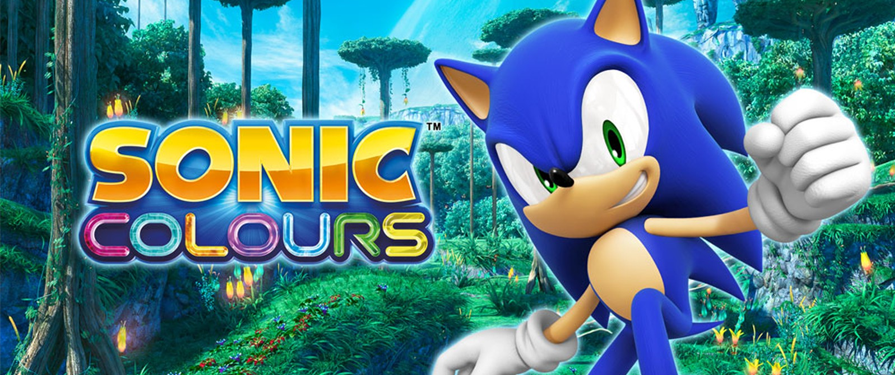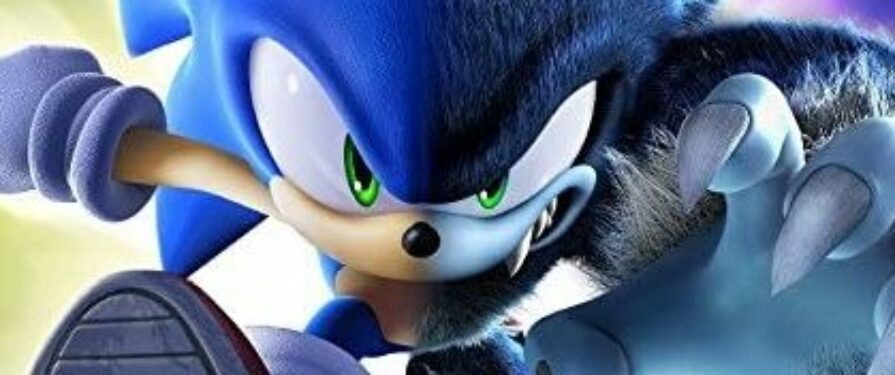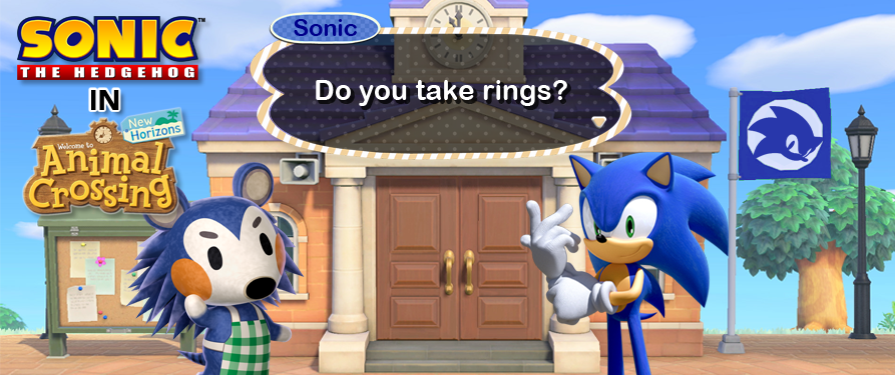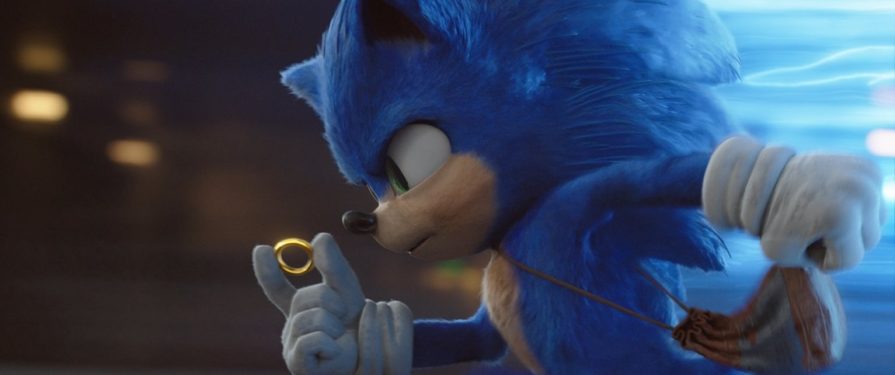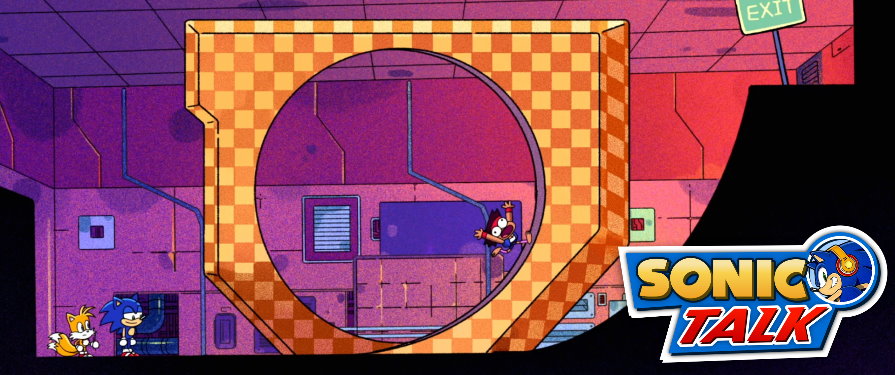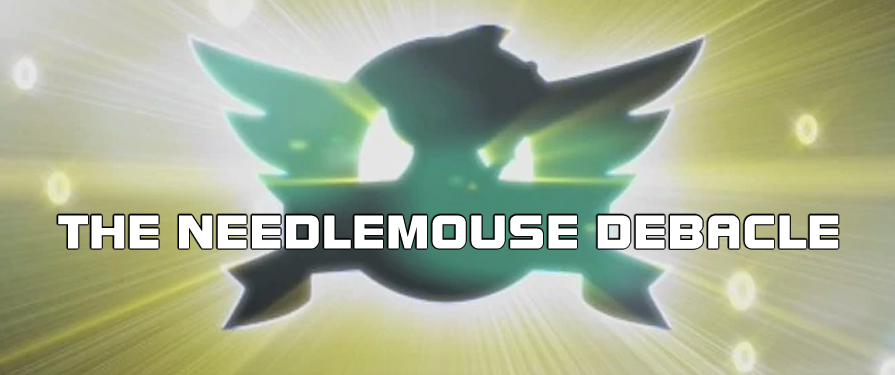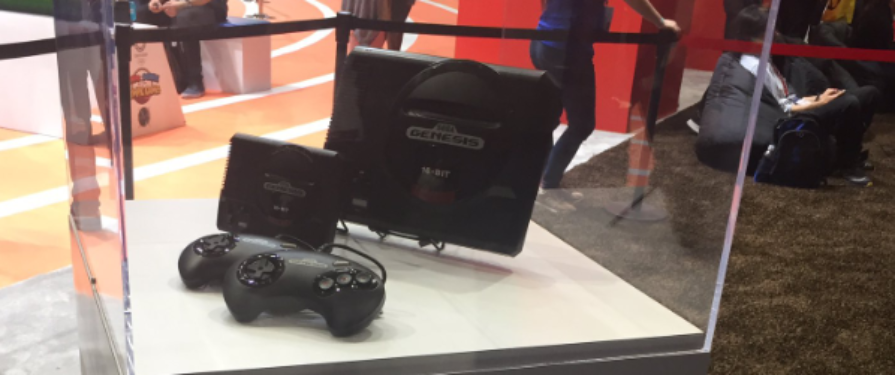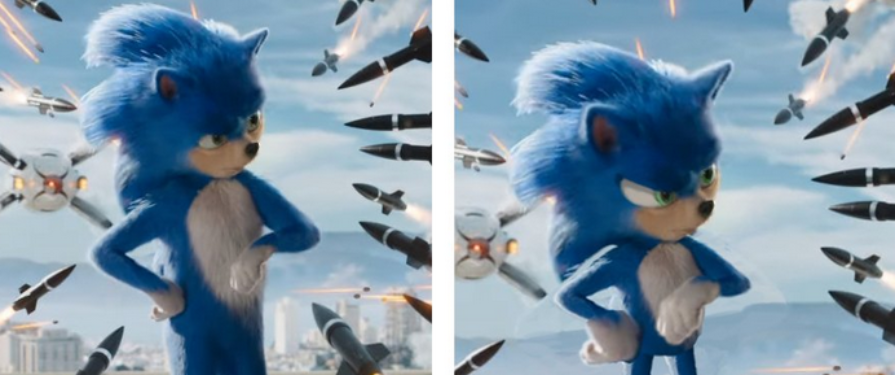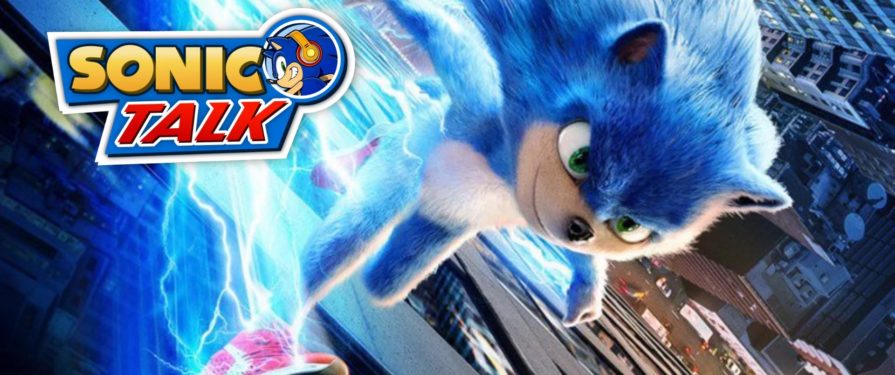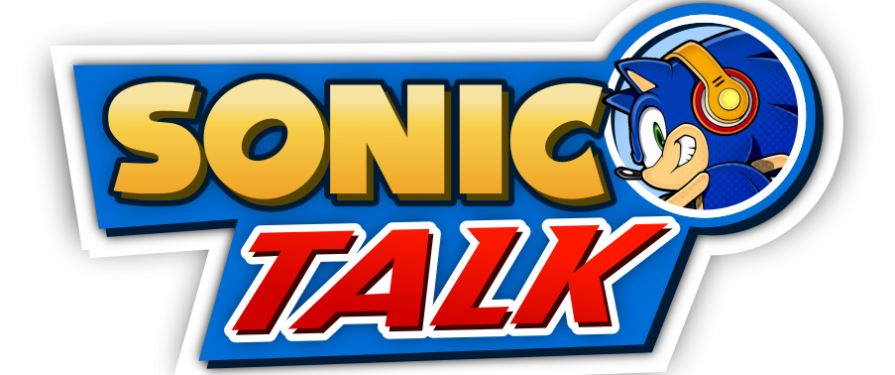Editor’s Note: MASSIVE STORY SPOILERS are in this article.
I loved Sonic game stories when I was a kid. I loved their bigness, the way they gave the game world a sense of history and tragedy. As someone who hadn’t yet played any JRPGs, they were unlike anything I had ever experienced in a game before. It was so cool being taken into the past and seeing Knuckles’ people, the chaos emeralds and the strange creature that once protected them, the young echidna girl who befriended that creature, and the tragic way it all ended. And while Sonic Adventure 2’s story didn’t dig nearly as deep into the world’s past, I loved the tragedy of Shadow, Maria, and Gerald, the mysteriousness surrounding the Ark and its own connections to Chaos and the emeralds, and how it ended with everyone coming together and putting a stop to a sympathetic revenge plot 50 years in the making. That was then, of course.

These days, it’s much more difficult for me to enjoy those stories without rose-tinted glasses. And the stories that came after…never held the same magic for me. Heroes, Shadow, Sonic 06 were all terrible, and on the rare occasion they weren’t (such as the Rush games) they felt smaller. Maybe I was growing out of them, but I think the real answer is far simpler: Sonic’s stories never had cohesion or direction from game to game, and that ultimately caused them to fall apart. But just as Sonic games were hitting what felt like their narrative low point with Sonic the Hedgehog 2006, I was in the midst of being enthralled by Archie Sonic’s newest headwriter: Ian Flynn.
Flynn worked some absolute magic with that comic. I had been a reader since 1995, but by 2006 I had dropped the comics due to my displeasure with where the stories were going. Ian Flynn managed to impress with his very first issue, 160, and from that point on he rarely produced a dud throughout his run. Over the course of a year, he repaired years of damage done to the comic’s narrative. He recontextualized poorly written characterization, retroactively turning it into part of a character’s arc, or using it to fuel drama that simultaneously makes it feel in-character and gives it a satisfying conclusion. Sonic, Tails, and Sally were all major benefactors of this, but nearly everyone in the comic’s cast got a moment.
I hadn’t seen these characters written this well in years, and I felt like I was welcoming old friends home. “Why can’t the games be written like this?” I began to ask myself, “Why can’t they just hire Ian Flynn?” Extraordinarily, 15 years later, I have finally gotten my wish. And just as I had hoped, Ian Flynn has done the same thing for the games that he did for the comics all those years ago. Sonic and company are back. No, scratch that: they have finally arrived.
Sonic Frontiers is easily the most well-written Sonic game I’ve ever played. The dialogue has that patented Flynn charm, with solid interactions between Sonic and everyone he comes into contact with. We’ve got genuinely funny jokes, extraordinarily well-written heart-felt moments, and an overall tone that can still be light, but is often quite somber. On top of all that, every character aside from Sonic himself gets some sort of arc.




Character arcs have never really been a strong suit of Sonic games. While they certainly happen, they can often be poorly written and are only occasionally well-executed. That Frontiers has five of them, and that they are mostly well done, is certainly a feat. They each leave the characters in a different place from where they’ve been for years, or even decades.
At the start, everyone is more or less where you’d expect them to be. Amy and Tails are tagging along with Sonic, Dr. Eggman is focused purely on his next take-over-the-world scheme, and Knuckles just wants to guard the Master Emerald. Over the course of the game, through their interactions with the Koco and Sonic, Amy, Tails and Knuckles all go through a change. The Kocos, which are essentially spirits of an ancient race trapped and troubled by the struggles they faced before death, act as conduits for character development, their arcs reflecting the struggles of Sonic’s friends.


Amy, who was once long characterized by her one-sided love-affair with Sonic, is driven to help a Koco find their lost love. By the end of it, she sees a love that transcended time, and decides she needs to share her own love with the world by going on her own adventure away from Sonic. Knuckles helps an army of Kocos trying to fight “the enemy.” Upon witnessing the destruction of their civilization he makes the connection between the Koco and his own people’s tragic past. For the first time I can recall, Knuckles expresses genuine regret over his lonely lot in life as the last of his kind. Sonic pulls him out of his funk by reminding him that he’s got his friends, leading to a truly heartfelt conversation that ends in Knuckles deciding to try out Sonic’s more adventurous lifestyle. Finally, we have Tails, who’s Koco…basically experiences Tails’ story in Sonic Forces. Yeah: this game’s story decides to deal with Tails’ worst moments in the franchise.


I think it’s fair to say the games haven’t really done much with Tails since the original Sonic Adventure, which saw him overcoming his fears, facing down Eggman, and saving Station Square from him. Since then…Tails has more or less remained static, rarely leaving Sonic’s side after Sonic Adventure 2 and more or less returning to the “sidekick who follows him around” role. But then we had Forces, where we go from character stagnation to character regression. Here, Tails “lost it” after Sonic’s defeat and Eggman’s near total takeover of the planet, something which effectively reversed one of the only bits of development Tails ever got.
So when it came time for Frontiers to give Tails his arc, Flynn pulled the same hat trick that worked so well in Archie: he took Tails’ decades of stagnation, his low point in Forces, and the many times he came through and melded it all together into Tails’ growth into a hero. This all ends up giving him the strongest and most defined arc in the game, and the plot’s best moments. Tails’ entire arc is him dealing with the fact that despite the strides he’s taken to be his own hero, he still messes up and can still fall back into his own comfort zone. Tails essentially experiences imposter syndrome, ignoring everything he’s done to earn his place by Sonic’s because all he can think about are his own mistakes.
This just feels so right for Tails, a character who started out as a lonely bullied kid. It makes him feel more human and complex, something I don’t think I’ve ever seen in a Sonic game character before. The best and most interesting character arcs are the messy ones, the ones where characters get to mess up, regress, relearn lessons, and genuinely struggle to become the better version of themselves they want to be. With Tails’ arc put in that context, it effortlessly became the best part of Frontiers’ narrative. And what’s really wild is that this simply wouldn’t be possible without Forces’ terrible, terrible story.
Outside of Sonic’s friends, the most well-defined arc in this game belongs to Dr. Eggman’s AI creation, Sage. While her arc is pretty thin and the weakest part of the entire game, she is able to do one thing no other Eggman companion has: bring out a different side of him. Indeed, I’d say one of Sonic Frontiers other major accomplishments is showing us a side of Eggman we’ve only gotten brief glimpses of before within the games.
Dr. Eggman isn’t just a guy with designs of world conquest, after all. He is a world class genius, a man of science, history, and engineering. Sonic Frontiers lets us see this other side of him, largely through its unlockable “Egg Memos.” The Egg Memos are the best contributions any game has given to Eggman’s character: he marvels at the Ancient’s technology, figures out the Starfall Islands’ numerous technological and archeological mysteries, develops a fatherly affection for Sage, and he even gives his honest thoughts on Sonic, Amy, Knuckles and Tails. We get to hear him talk himself into accepting that Sage is alive, because of course he is smart enough to create life! He even talks about his cousin Maria, and the jealousy he felt over her being given love from his family that he was denied, despite her being gone. These memos manage to give Eggman more depth than three decades of games ever did.
What’s even better about all this is that it feels very much in character for him. He still often talks about future schemes for world conquest, laughs maniacally, has a very high opinion of himself, disregards the insane risks his own plans pose, and even briefly, excitedly contemplates stealing a defenseless Master Emerald before remembering he’s trapped. His affection for Sage and feelings towards Maria and his own family feel like extensions of the Eggman we briefly saw at the end of Sonic Adventure 2, when he reminisced over his Grandpa Gerald and how he inspired him to become a scientist. Eggman was never a man totally incapable of love; it’s just something the games have almost never explored before.




Unfortunately, as I said before, Sage’s own arc is thin. She shares just three-and-a-half minutes of screentime with Eggman, leaving their relationship feeling a pretty undercooked, though throwing the memos into the mix does help. But Sage’s relationship with Sonic fares a little better, as most of her actual development comes from observing and interacting with him. Sonic has brought many former adversaries into the fold, but Sage is one of the only ones whose change felt somewhat earned by the plot. Sage is consistently surprised by Sonic’s perseverance, moved by his friendships, and over the course of the game her interactions shift from cold indifference, to curiosity, to genuine respect. Unfortunately, the bulk of Sage’s interactions with Sonic still boil down to her telling him resistance is futile and refusing to explain anything to him, which can get a bit repetitive and boring.
Sonic Frontiers is, in many ways, the Sonic game story I’ve been waiting for for decades. It’s got the lore building of the Sonic Adventure games, the quality vocal performances expected of a modern game, and the writing of Flynn-era Archie and IDW comics. It’s still not entirely where I want it to be: Sage’s story is a bit weak, the tone of the story overshoots and is a little too serious and somber, and the lack of a larger cast leaves the world feeling empty. Future games will need to be willing to have longer cutscenes that give non-player characters like Eggman and Sage the screen time they need. They need to more effectively balance darker, more serious scenes with lighter moments and humor. Finally, future games need to have a larger cast, with more supporting and secondary characters in a livelier, more populated world.



Despite these issues, Sonic Frontiers truly feels like the start of a golden era of Sonic game storytelling. The potential this game opens up for future stories has me genuinely excited! Just stick with Ian Flynn, SEGA, and maybe bring other IDW writers like Stanley and Barnes into the mix too. Give Sonic Team the budget to realize a story with even greater scope. Let what’s been built here flourish and grow, and most importantly, follow through on what this game sets up and let these characters change!

